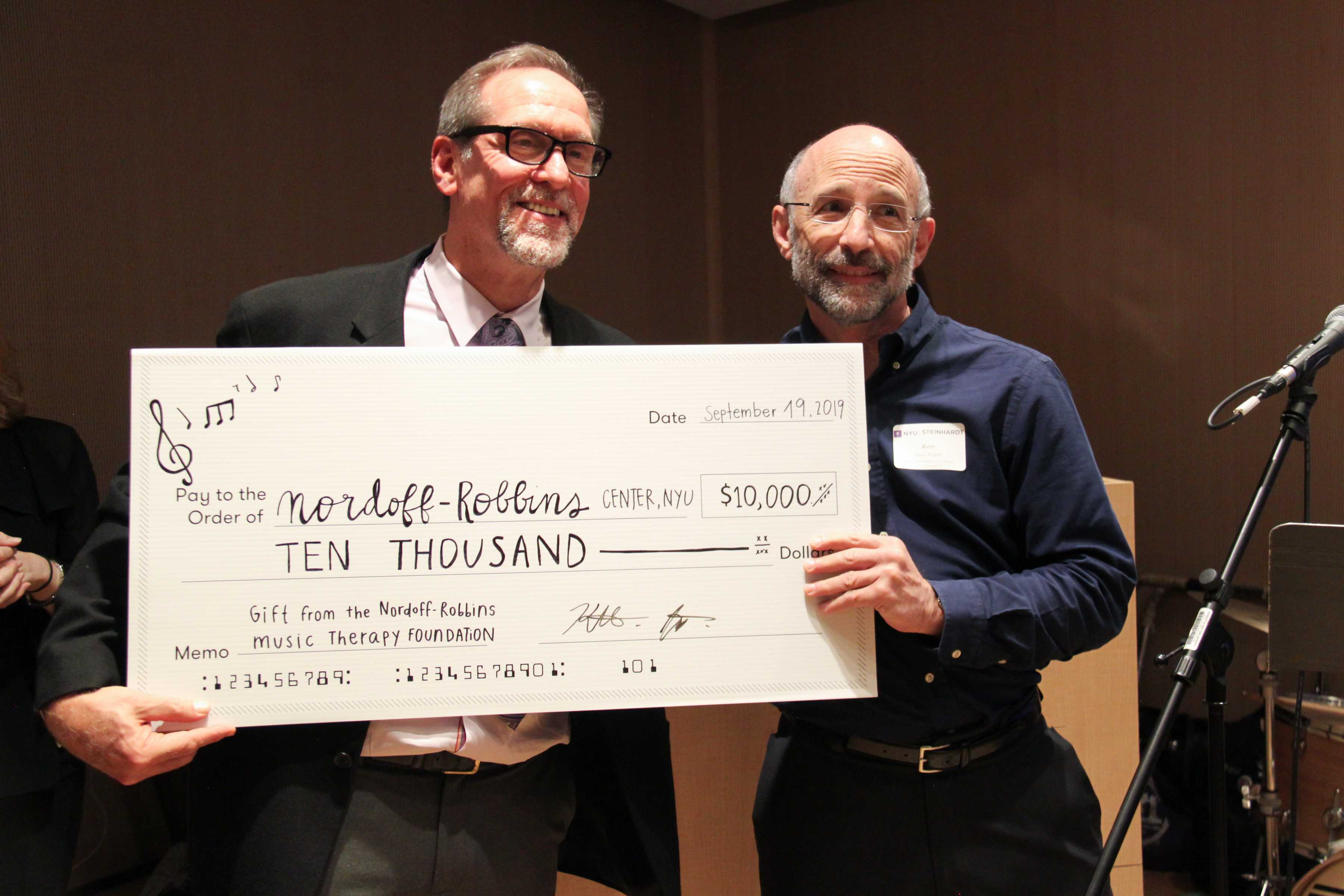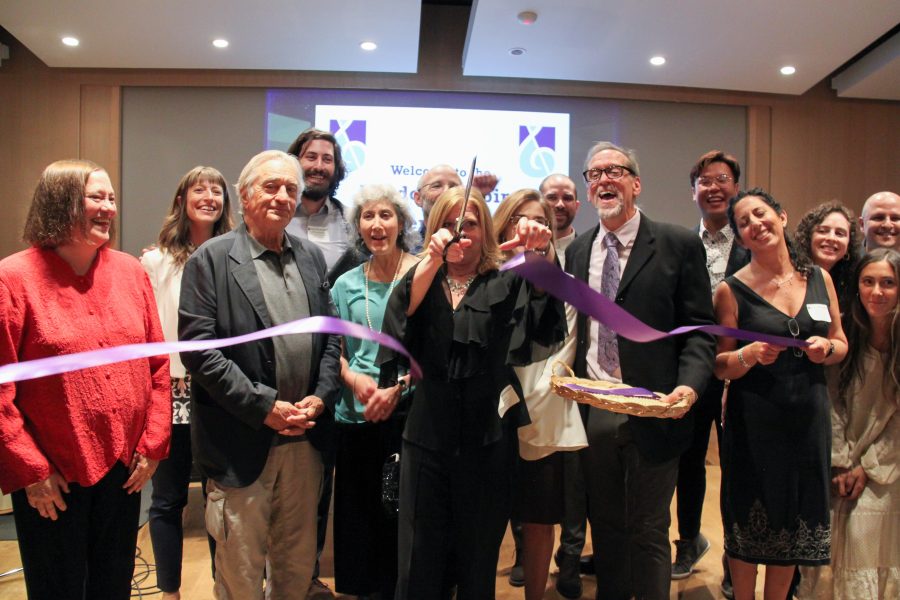Steinhardt Opens New Facility for Music Therapy, Research
The facility will have one room for treatment and another for recording therapy sessions so they can be used for research.
Dean Morris cuts the ribbon, officially opening the Nordoff-Robbins Center with Robert De Niro (left). (Photo by Alexandra Chan)
September 24, 2019
The NYU Steinhardt School of Culture, Education and Human Development opened a new facility on Thursday within the Nordoff-Robbins Music Therapy Center where children with disabilities — such as autism and behavioral disorders — will be treated.
The facility will continue the work and research that the Nordoff-Robbins Music Therapy team has been conducting for 30 years as part of a graduate program within Steinhardt. At the center, patients play and improvise music as a way of forming a connection with their therapist to develop expressive skills and their ability to relate to others.
However, the new facility will also be used to conduct research. In one room, the client and the therapist will work together, while in another — called Mission Control — two cameras are operated by a researcher studying the sessions. The researcher is able to zoom in on important moments throughout the session and the advanced recording technology allows them to mark, make notes and categorize specific and significant moments throughout the session.
“Having the ability to study this with such detail and such efficiency is going to feed back into the clinical work,” Managing Director of the center Dr. Alan Turry said. “Ideas about the human condition and therapy are being integrated into these next generations of music therapists.”

Therapists use these recordings in a process called indexing, in which they look back at the responses to the music and interactions with the client. The recordings are also archived for further research and show the work that is being done at the center.
“We have such a rich resource of archival material,” Faculty Director and Professor of Music Therapy Barbara Hesser said. “We have one of the largest archives of clinical work in the world.”
During a ribbon-cutting ceremony on Thursday, clients of Nordoff-Robbins Music Therapy performed for attendees.
“In my past 18 years of attending Nordoff-Robbins, it’s made me become a much better person,” Jules Este, who sang for the group, said. “To be more open minded and […] to embrace any new challenges that come toward me.”
The Nordoff-Robbins approach to music therapy was created by gifted pianist Paul Nordoff and special needs educator Clive Robbins. The approach focuses on improvisation and working closely with therapists to be active in the musical process.
“We as human beings are inherently sensitive to music,” Turry said. “The therapist is trying to tap into these aspects of musicality that might be hidden within the person.”
The client’s active involvement in the process allows them to enhance their self-expression, concentration and social reliability, according to Turry.
“As they engage in music, the way that they’re relating becomes more in sync with the other person, their ability to listen to the other person becomes greater, their ability to communicate becomes greater –– all of this is happening in music,” Turry said.
Email Claire Jones at [email protected].”
























































































































































